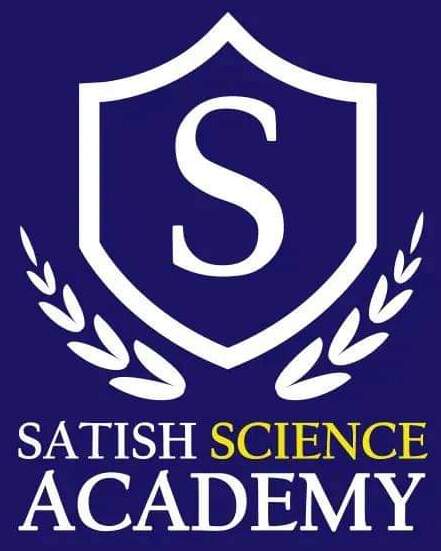Units and Measurements Class 11
1. Introduction to Units and Measurements
When we begin studying physics in Class 11, one of the first and most important chapters we encounter is Units and Measurements. This is because science is all about observations, experiments, and numerical values. Without proper measurement, science would be incomplete. Imagine trying to describe the length of a table without specifying its measurement — it would create confusion. That’s why this chapter sets the foundation for the rest of physics.
Units and measurements help us compare physical quantities. For example, saying “the rod is 3 meters long” makes sense only because we have defined “meter” as the standard unit of measurement. Similarly, when we talk about mass, we rely on kilograms, and when we talk about time, we rely on seconds. These units allow us to communicate results universally without ambiguity.
In daily life, too, units play an important role. A shopkeeper measures sugar in kilograms, a tailor measures cloth in meters, and a driver calculates speed in kilometers per hour. All of this comes from the systematic use of units and measurements.
For Class 11 students, mastering this chapter is crucial because it is not just theory — it also involves practical understanding. The use of instruments like Vernier Calipers and Screw Gauge in physics labs depends heavily on the concept of measurement. Moreover, competitive exams like JEE, NEET, and Olympiads often test conceptual clarity of units and measurements.
At Satish Science Academy, teachers make this chapter simple by giving real-life demonstrations. For example, instead of just reading about accuracy and precision, students get hands-on experience by measuring objects with laboratory instruments. This practical approach helps them overcome fear of errors and build confidence.
In conclusion, the chapter Units and Measurements is not just the starting point of physics, but also the foundation upon which advanced topics like Mechanics, Electricity, and Modern Physics are built. A strong grip on the unit of measurement ensures accuracy, confidence, and success in both board exams and entrance exams.
| 11TH HSC UNITS AND MEASUREMENT QUESTION | DOWNLOAD |
| 11TH HSC UNITS AND MEASUREMENT QUESTION SOLUTION | DOWNLOAD |
2. What is a Unit of Measurement?
The word “unit” comes from the Latin word unus, meaning “one.” In physics, a unit of measurement is a standard quantity used to express physical quantities like length, mass, and time. For example, if we say the length of a pencil is 15 cm, “centimeter” is the unit of measurement that gives meaning to the number 15.
Without a unit of measurement, numbers would be meaningless. If someone says “the car runs at 100,” we cannot understand whether it is 100 meters per second, 100 kilometers per hour, or 100 miles per hour. Only when the correct unit of measurement is added does the value make sense.
Over the years, different civilizations used different systems of measurement. Ancient people used body parts like handspan, foot, or cubit as units. But these were not reliable, as the size of a hand or foot varies from person to person. Later, systems like CGS (centimeter-gram-second), FPS (foot-pound-second), and MKS (meter-kilogram-second) evolved. Finally, to maintain uniformity across the world, scientists agreed on a global standard known as the SI system (International System of Units).
The SI system provides seven base units (meter, kilogram, second, ampere, kelvin, mole, candela) and several derived units (like newton, joule, pascal). This system ensures that whether a student is in India or the USA, the unit of measurement remains the same and the results are comparable.
At Satish Science Academy, teachers explain this concept using simple examples. Suppose two students measure the height of a flagpole, one using meters and another using feet. The numbers may differ, but the unit of measurement tells us how to convert one into another. This is why understanding units is essential in physics.
To summarize, a unit of measurement is not just a label; it is the backbone of science that removes confusion, ensures standardization, and enables accurate communication of results.

3. SI Units and Their Importance
The SI system of units and measurements is universally accepted because it provides a consistent and logical framework. It is based on seven fundamental units, which cannot be broken down further. These include:
- Length – meter (m)
- Mass – kilogram (kg)
- Time – second (s)
- Electric current – ampere (A)
- Temperature – kelvin (K)
- Amount of substance – mole (mol)
- Luminous intensity – candela (cd)
From these base units, we derive many other quantities. For example, force is measured in newtons (kg·m/s²), energy in joules (kg·m²/s²), and pressure in pascals (N/m²). These are called derived units of measurement.
Why is the SI system so important? First, it eliminates confusion. If one country uses meters and another uses yards, comparing results becomes difficult. Second, it allows scientists and engineers across the globe to collaborate seamlessly. Third, it makes learning physics easier for students because the entire system is built logically on just seven base units.
Another advantage of the SI unit of measurement is its precision. The definitions of SI units are not arbitrary. For instance, the meter was once defined as a fraction of the Earth’s circumference but is now defined based on the speed of light, making it highly accurate and universal.
At Satish Science Academy, teachers emphasize learning SI units thoroughly because examiners often test students’ memory and application of SI units. For example, questions like “Write the SI unit of pressure” or “Express joule in base SI units” frequently appear in board exams. To make learning easier, SSA uses mnemonic tricks and visual aids so students never forget these values.
In conclusion, the SI system of units and measurements is the most reliable and universal system. It is essential for scientific progress, technological development, and accurate learning at the school level.

4. Systems of Units and Measurements
Before the SI system was universally adopted, different regions used different systems of units and measurements. The three major traditional systems are:
- CGS system – Uses centimeter (length), gram (mass), and second (time). Example: force is measured in dyne.
- FPS system – Uses foot (length), pound (mass), and second (time). Example: force is measured in poundal.
- MKS system – Uses meter (length), kilogram (mass), and second (time). Example: force is measured in newton.
Each system had its own applications. For instance, the CGS system was widely used in labs due to its convenience with small values, while the FPS system was common in English-speaking countries. However, these systems created confusion when comparing results globally.
That is why scientists agreed on the SI system of units and measurements, which is now standard across the world.
Students often face exam questions requiring conversions between these systems. For example:
- Convert 1 dyne into newtons.
- Express 1 erg in joules.
At Satish Science Academy, such problems are taught step by step, ensuring students don’t get confused by multiple systems. Teachers also highlight common mistakes students make, such as forgetting to square or cube conversion factors when dealing with area or volume.
Understanding these older systems is still important because they appear in textbooks, exams, and sometimes in scientific literature. But mastering conversions helps students strengthen their foundation in units and measurements.
5. Methods of Measurement
There are two broad methods in units and measurements:
- Direct measurement – When we use a scale, stopwatch, or balance to measure directly. Example: measuring length of a pen using a ruler.
- Indirect measurement – When we calculate values using formulas. Example: measuring speed by dividing distance by time.
To achieve accurate results, physics uses precise instruments like Vernier Calipers, Screw Gauge, and Spherometer. Each of these tools works on the principle of least count.
- Vernier Caliper measures small lengths, internal and external diameters. Least count = 0.01 cm.
- Screw Gauge measures thickness of wires. Least count = 0.01 mm.
- Spherometer measures radius of curvature of spherical surfaces.
In units and measurements, accuracy and precision are two key concepts. Accuracy means closeness to the true value, while precision means consistency in repeated results. For example, if three students measure the same rod and get values 2.9 cm, 3.0 cm, and 3.1 cm, the result is precise but may not be accurate if the true value is 3.5 cm.
At Satish Science Academy, students perform practical experiments in labs to understand these concepts deeply. Teachers guide them on how to take readings carefully, avoid parallax errors, and calculate least count correctly.
These measurement techniques not only prepare students for board exams but also build skills needed for higher studies in engineering and medicine.

6. Errors in Measurements
No measurement is perfectly accurate. Every experiment involves some error, and understanding these errors is a major part of units and measurements.
Types of errors:
- Systematic error – Same mistake repeated every time (e.g., faulty instrument).
- Random error – Irregular variations due to unknown factors.
- Least count error – Error due to the limitation of the measuring instrument.
Propagation of errors is another important concept. For example:
- If two lengths are added, absolute errors are also added.
- If two quantities are multiplied or divided, relative errors are added.
Students often find error analysis difficult, but with practice it becomes easy. Typical exam questions include:
- The least count of a screw gauge is 0.01 mm. The diameter of a wire is measured as 2.56 mm. Find the percentage error.
- Derive the formula for error propagation in division.
At Satish Science Academy, teachers provide customized worksheets on error calculation. Students are trained to identify error sources and minimize them in practicals. For example, they learn how to take multiple readings and use averages to reduce random errors.
Understanding errors makes students more confident in physics because it teaches them that mistakes are normal but can be calculated and corrected. In fact, the ability to handle errors separates a good student from an excellent one in board exams and competitive tests.
7. Significant Figures in Units and Measurements
When we study units and measurements, another important concept that arises is significant figures. These are the digits in a measurement that carry meaning about its precision. For example, if we write 2.53 cm, all three digits (2, 5, and 3) are significant because they give information about accuracy. However, if we write 0.00253 cm, the leading zeros are not significant.
Rules of significant figures are vital for solving problems:
- All non-zero digits are always significant.
- Zeros between two non-zero digits are significant.
- Leading zeros, which come before the first non-zero digit, do not contribute to the number of significant figures.
- Trailing zeros in a number without a decimal are not significant, but trailing zeros in a decimal number are significant.
- In multiplication or division, the result should have the same number of significant figures as the quantity with the least significant figures.
- In addition or subtraction, the result should retain the least number of decimal places used in the calculation.
Students often get confused about when to round off and when to keep digits. For example:
- 1.230 has 4 significant figures because the trailing zero after the decimal counts.
- 0.0056 has 2 significant figures because the zeros before 5 don’t count.
The importance of significant figures in units and measurements is that they link measurement accuracy with the numerical value. Without this concept, we could falsely represent a value as being more precise than it actually is.
At Satish Science Academy, teachers explain this concept using numerical problems similar to board exam style. They also highlight how significant figures appear in NCERT textbook questions and how students can maximize marks by rounding correctly. For instance, in JEE or NEET, incorrect handling of significant figures may lead to a wrong option even if the calculation is correct.
In conclusion, significant figures make measurements reliable, realistic, and error-free. They ensure that results in units and measurements reflect the precision of the instrument used.
8. Dimensional Analysis
Another pillar of units and measurements is dimensional analysis, which helps in understanding the relation between physical quantities. Each physical quantity can be expressed in terms of basic dimensions: length (L), mass (M), and time (T), along with electric current (I), temperature (K), luminous intensity (Cd), and amount of substance (Mol).
For example:
- Velocity = displacement/time = [L][T⁻¹].
- Force = mass × acceleration = [M][L][T⁻²].
- Work = force × distance = [M][L²][T⁻²].
Applications of dimensional analysis:
- Checking correctness of equations: Suppose you are given the formula for kinetic energy as E = ½mv³. By checking dimensions, you’ll realize it is incorrect because the correct formula is E = ½mv².
- Conversion of units: Dimensional analysis helps in converting one unit of measurement to another. For instance, converting dynes into newtons or ergs into joules.
- Deriving relations: Approximate formulas can be derived using dimensions, though constants cannot be determined this way.
Limitations of dimensional analysis:
- Cannot determine dimensionless constants (like π or ½).
- Cannot decide whether a quantity is scalar or vector.
- Cannot derive trigonometric, exponential, or logarithmic functions.
For Class 11 students, dimensional analysis is both a scoring and conceptual topic. In exams, students are often asked to write the dimensional formula of specific physical quantities.
At Satish Science Academy, this topic is made fun with tricks like “LMT rule” for remembering base quantities. Students are also given ample numerical practice because this topic is heavily tested in competitive exams.
In summary, dimensional analysis is a powerful tool in units and measurements. It acts as a grammar of physics, helping students check, convert, and derive equations with confidence.
9. Practical Applications of Units and Measurements
The chapter Units and Measurements is not just theoretical — it has real-life applications everywhere. In fact, without standardized units, science and technology would not exist.
Some daily-life applications include:
- Buying vegetables and groceries using kilograms.
- Measuring cloth in meters at a tailor’s shop.
- Doctors measuring body temperature in Celsius or Kelvin.
- Engineers designing machines using SI units of force, energy, and pressure.
In the scientific world, units and measurements are even more critical:
- Astronomers measure distances between stars in light years or parsecs.
- Chemists measure concentration of solutions in moles per liter.
- Engineers measure stress and strain in pascals.
- Physicists study particles using femtometers and nanometers.
Students preparing for higher studies like JEE and NEET must understand applications of units and measurements because these concepts are directly used in mechanics, thermodynamics, and electricity.
For example:
- In mechanics, velocity and acceleration calculations depend on proper unit conversions.
- In thermodynamics, temperature units must be consistent to apply laws correctly.
- In electromagnetism, SI units like ampere, volt, and ohm are crucial.
At Satish Science Academy, teachers often connect classroom concepts with practical applications. For example, they show how speedometers in vehicles display units in kilometers per hour and how we can convert it into meters per second for calculations. Similarly, in labs, students measure resistance using ohms and compare results with theory.
In conclusion, units and measurements are not confined to textbooks; they form the bridge between theory and real-world applications. A strong grasp of this topic equips students not only for exams but also for practical problem-solving in everyday life.
10. Important Questions and Answers for Class 11 (Units and Measurements)
Students often ask: “How do we prepare for exams in this chapter?” The best way is to practice important questions and answers on units and measurements. Here are some typical examples with solutions:
Q1. Define physical quantity. Give two examples.
Ans: A physical quantity is any quantity that can be measured and expressed in terms of a unit of measurement. Examples: Length (meter), Mass (kilogram).
Q2. Differentiate between fundamental and derived units.
Ans:
- Fundamental units: Independent units (meter, kilogram, second).
- Derived units: Formed from fundamental units (newton, joule, pascal).
Q3. What is least count? Give an example.
Ans: Least count is the smallest value an instrument can measure. Example: Vernier calipers with least count 0.01 cm.
Q4. Write rules of significant figures.
Ans:
- All non-zero digits are significant.
- Zeros between two non-zero digits are significant.
- Leading zeros are not significant.
- Trailing zeros in a decimal are significant.
Q5. State limitations of dimensional analysis.
Ans: Cannot give scalar/vector nature, cannot derive trigonometric relations, cannot determine constants.
Q6. Convert 1 dyne into newton.
Ans: 1 dyne = 10⁻⁵ newton.
Q7. A screw gauge has least count 0.01 mm. If the diameter of a wire is 2.56 mm, find percentage error.
Ans: Error = (0.01 ÷ 2.56) × 100 = 0.39%.
Q8. Write SI unit of energy and express it in base units.
Ans: SI unit = joule (J). Base units = kg·m²/s².
At Satish Science Academy, students get a complete bank of such units and measurements questions with answers, which not only help in boards but also in competitive exams. Teachers guide them on how to write precise answers for maximum marks.
11. Satish Science Academy Advantage in Units and Measurements
While the NCERT book provides the base, mastering units and measurements requires expert teaching. That’s where Satish Science Academy comes in.
Here’s how SSA helps students in this chapter:
- Interactive Classes: Teachers use demonstrations with real instruments like Vernier calipers, screw gauges, and spherometers.
- Concept Clarity: Instead of rote learning, students understand why SI units are important and how measurement errors occur.
- Exam-Oriented Approach: Practice of board-level and competitive exam questions ensures high performance.
- Personalized Attention: Small batch sizes allow teachers to focus on individual doubts.
- Regular Assessments: Weekly tests on topics like significant figures, dimensional analysis, and error propagation keep students exam-ready.
- Foundation for JEE/NEET: Since this chapter recurs in advanced topics like mechanics, SSA ensures students are conceptually strong from the beginning.
- Testimonials: Many Class 11 toppers credit SSA’s unique approach for their confidence in physics, especially in units and measurements.
In short, SSA not only teaches the chapter but also builds long-term skills in accuracy, logical reasoning, and practical applications — all starting with units and measurements.
12. Conclusion
The journey of physics begins with units and measurements. Without standardization, measurement, and accuracy, science would lose its meaning. From understanding the unit of measurement to mastering SI units, conversions, significant figures, dimensional analysis, and error calculation, this chapter forms the backbone of higher learning.
For Class 11 students, mastering units and measurements is not optional — it is essential for scoring well in board exams and excelling in competitive exams like JEE and NEET. The good news is that with structured guidance, this chapter becomes one of the easiest to score.
At Satish Science Academy, the teaching approach transforms this seemingly basic chapter into a strong foundation for future success. Through practical learning, regular assessments, and exam-oriented preparation, SSA ensures that every student gains confidence in solving numerical problems, handling experiments, and understanding the true essence of physics.
So, if you are a Class 11 student aiming to master units and measurements and build a rock-solid base for your academic journey, Satish Science Academy is the right destination for you.
FAQs on Units and Measurements – Class 11
What are units and measurements in physics?
Units and measurements in physics refer to the standard method of expressing physical quantities. A unit of measurement provides a scale, while measurement gives the numerical value of a quantity. Together, they form the foundation of all scientific studies.
Why are units and measurements important in Class 11 physics?
Units and measurements are important in Class 11 because they build the base for advanced topics like mechanics, electricity, and thermodynamics. Without standard units, scientific communication and experiments would lack accuracy.
What is a unit of measurement?
A unit of measurement is a defined standard used to express physical quantities. For example, meter for length, kilogram for mass, and second for time. These units make values meaningful and comparable.
What are the SI units of measurement?
The SI system has seven base units: meter (length), kilogram (mass), second (time), ampere (current), kelvin (temperature), mole (amount of substance), and candela (luminous intensity). These are the universal standards used in physics.
What is the difference between fundamental and derived units?
Fundamental units are the seven base units of the SI system (like meter, kilogram, second). Derived units are combinations of these, such as newton (kg·m/s²) for force and joule (kg·m²/s²) for energy.
What are the types of errors in measurements?
In units and measurements, errors are classified as systematic errors, random errors, and least count errors. Each affects the accuracy of results differently and can be minimized through careful experiments.
How do you calculate significant figures in physics?
Significant figures are calculated using rules: non-zero digits are always significant, zeros between non-zero digits are significant, leading zeros are not, and trailing zeros after a decimal are significant.
What is dimensional analysis in units and measurements?
Dimensional analysis expresses physical quantities in terms of basic dimensions (M, L, T, etc.). It helps check correctness of equations, derive relations, and convert units of measurement.
What are the practical applications of units and measurements?
Applications include measuring groceries in kilograms, distance in meters, time in seconds, and speed in km/h. In science, they are used in labs, engineering, astronomy, and medical sciences for precision.
What is least count in measurement?
Least count is the smallest value an instrument can measure. For example, Vernier calipers have a least count of 0.01 cm, while a screw gauge has 0.01 mm.
Why is accuracy important in units and measurements?
Accuracy ensures the measured value is close to the true value. In physics, accurate units and measurements lead to reliable results, essential for experiments, research, and exams.
What is the difference between accuracy and precision?
Accuracy means closeness to the true value, while precision means repeatability of results. In units and measurements, a result can be precise without being accurate.
Which chapter is Units and Measurements in Class 11 NCERT?
Units and Measurements is the first chapter in Class 11 NCERT Physics. It introduces measurement, SI units, errors, significant figures, and dimensional analysis.
How many questions are asked from Units and Measurements in NEET/JEE?
Usually 1–2 direct questions appear in NEET/JEE from this chapter. They are mostly based on dimensional analysis, errors, or SI units, making this a scoring chapter for aspirants.
How does Satish Science Academy teach units and measurements?
At Satish Science Academy, students learn through practical demonstrations, doubt-solving sessions, and exam-oriented practice. The academy focuses on accuracy, error analysis, and real-life applications, ensuring strong fundamentals for Class 11 and beyond.







